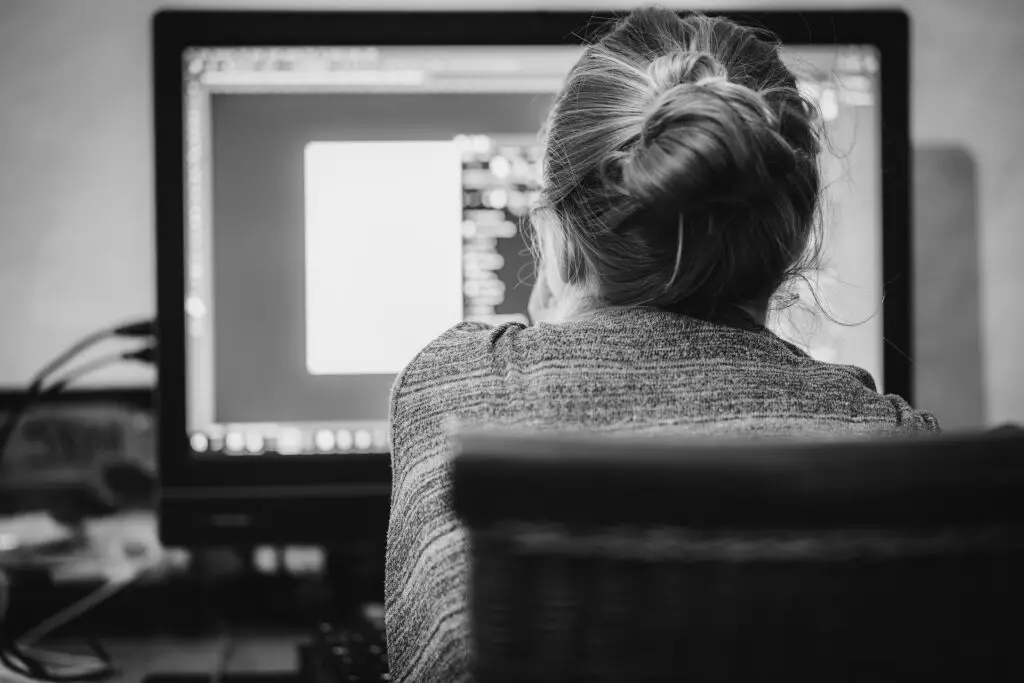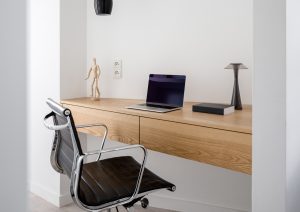The COVID-19 pandemic has, most likely, forever changed the way we work. More people than ever before are working from home. Employees benefit and many businesses have discovered that not only is it cheaper to have people work remotely rather than from a central office, statistics show that most people are as productive, or more productive working from home than they were working from an office! It’s a win-win deal if all the dots line up.
While remote working may offer many benefits for businesses and workers alike, there are also a number of downsides to working from home that need to be considered.

The pandemic has created a time of uncertainty for people across the world. Not only have people had to reckon with the fact that the world has changed due to a disease, the economic, work and interpersonal effects of the pandemic have compounded the stresses that everyone is under.
Working from home, particularly for those unused to working from home, has changed the way people interact. With that change came a number of mental health risks different to those that people may experience in an office environment.
These risks may not necessarily be the source of immediate damage, but rather stressors that may build over time, leading to negative mental health effects, including:
Panic Disorder or Panic Attacks
The psychological factors that may impact a person working from home can be roughly placed into a number of categories.
Post Contents
Setting Boundaries
Many people working from home, especially if they are working remotely for the first time, may find it difficult or near impossible to set boundaries between their work and home life. Waking up, getting out of bed and already being at work may lead to difficulties relaxing or switching off, motivational issues and more.
Lack of Control
Many people working remotely may feel a lack of control over their situation, environment, expectations and more. It’s not uncommon for people working from home to feel as though they are essentially prisoners in their homes… stuck in the one place for work and rest and only allowed to leave for a few reasons – and then only for a short time.
Environmental Issues
Your work environment may have an affect on both your mental and physical health. With the rise in people working from home we’ve seen a subsequent rise in people suffering from ergonomic injuries.
- Ergonomic injuries – RSI (repetitive strain injury), tendinopathy, back pain, neck pain, knee pain, carpal tunnel and the like – are typically the result of small, repeated traumas to muscles, tendons, ligaments, blood vessels or nerves caused by the fact that the workplace isn’t up to the task at hand. This can put small but significant stress on different parts of the body.
One of the major contributing factors to the rise of home workplace injuries is that, with few exceptions, most people don’t have the space or the knowhow to set up proper office spaces in their home. As a result people are making do with what they have. In many cases, that is far from enough.
Some countries such as Australia, have set new guidelines for employer responsibility when it comes to remote working workspaces.
Under these new guidelines, employers must take all reasonable steps to make sure that an employee’s workspace is fit for the task and meets OH&S requirements. This may require an assessment, photos being taken, and even supplying some materials by the employer, such as monitors or properly supportive chairs.
Your environment may also have a psychological effect thanks to possible distractions (proximity of TV or other leisure activities), noise level, quality of light and more. While having a dedicated home office may allow remote workers to set up a proper home office, many, if not most remote workers lack the space to do so.
Injuries due to an inappropriate or inadequate work space may also negatively affect mental health due to frustration with the situation, ongoing pain, and a lack of a clear path to rectify the challenges.

- Family – if there’s more than one person working from home, if you have young children or have children homeschooling or distance learning, trying to create a separation between work and home life may be incredibly difficult. Constant presence of family members may also lead to interpersonal stress or relationship strain as the stress of work crosses interpersonal boundaries.
- Fatigue – the lack of distance between work and home life may lead to difficulty sleeping, fitful sleep and fatigue as finding a way to unwind from work may prove difficult as you are essentially still in the “office”.
A number of factors aside from sleep may also contribute to fatigue, many of which are commonly experienced by people working from home, including boredom, emotional turmoil or stress. Fatigue may also be linked to mental health issues including anxiety and depression.
- Isolation – even with lockdowns being lifted, people working from home, especially if they live alone, may experience feelings of intense loneliness or isolation. Even though you may be in contact with coworkers over video chat services such as Skype or Zoom, or may be on the phone a great deal of the day, a lack of face-to-face or physical contact with other people may have a significant impact on mood and mental health.
Although closely linked, isolation and loneliness are not the same. Isolation refers to a state in which people have minimal contact with others, whereas loneliness is more of a subjective measure of not having a desired amount of social contact. During lockdown, many people have experienced both, but even in normal circumstances people working from home may experience feelings of loneliness or isolation.
A number of factors may influence this experience, including a lack of physical contact with or even proximity to other people or a lack of typical access to regular support networks, such as workmates, management of supportive friends. For many people, keeping in contact via remote means, such as video chats, message boards or phone calls is no replacement for face-to-face contact, and may even serve to exacerbate feelings of isolation or loneliness as they act as a reminder of actively not being around other people.
The Australian National University has been conducting a longitudinal study on the effects of COVID-19 isolation in Australia. The ongoing results of the COVID-19 Impact Monitoring Survey Program, have shown a marked uptick of psychological distress, stress and incidents of negative mental health events since the beginning of the pandemic and the subsequent lockdowns, remote working situations and isolation.

- Support – working from home may also affect both the efficacy or availability of support networks you may typically have in a social, office setting. No matter the number of possible communication tools available to you – Zoom, Skype, Slack, Email, Phone Calls and the like, none have the immediacy and clarity of simply turning to your co-worker, supervisor or manager and asking a question.
Delays in communication can lead to frustration, stress and perceived changes in work demand, such as the feeling of having to be more independent or taking on more related work due to a lack of immediate feedback or clarity from remote coworkers or managers.
Working from home may also impact a worker’s mental health in other ways, such as from changed family demands. For example, home schooling school-aged children who are learning from home, relationship strain or family and domestic violence.
Thankfully there are tools available to help remote workers deal with the stresses of working from home, one that may be provided by employers, whereas the other is available to all Australians with a valid Medicare Card.
What is an Employee Assistance Program (EAP)?
Employee Assistance Programs are services provided by an employer for an employee by contracting a third party Employee Assistance Provider. EAPs give employees 24/7 access to trained psychologists for confidential counselling for both work and home related issues. With an increasing number of people working from home, the line between work and home life is becoming a little harder to define, making this kind of counselling service progressively more in demand.
Even though EAPs are accessed through work – typically via a phone number provided by your employer – the counselling services provided are 100% confidential, so no details are shared with your employer. This means that not only will your employer not know why you sought counselling, but that they are not informed that you have sought counselling at all, unless you choose to share that information, of course.
An Employee Assistance Program is a service provided by employers to employees, giving them access to confidential counselling with trained psychologists. These psychological services may be accessed for a number of reasons, ranging from minor psychological issues such as low moods, worries and motivational problems through to much more serious psychological issues like suicidal ideation, depression, anxiety and acute stress.
Although these services are accessed through work, the issue being discussed with the EAP provider doesn’t have to originate from work. Relationship breakdowns, sleeping issues, trauma and grief, and interpersonal issues both inside and outside work are all valid reasons for seeking assistance. All counselling is confidential, so even in cases that an employer may know you have accessed EAP services, the nature of the counselling and the actual counselling itself is private.
If the company you work for doesn’t currently employ the services of an EAP, then it may be time to suggest that management investigate entering into a contract with an EAP provider. If they need convincing, let your employers know that research shows that mental health issues are responsible for massive loss of revenue due to lost productivity, absenteeism, sickness and reduced performance.
Employing the services of an Employee Assistance Program provider appears to offer excellent return on investment. A 2014 PriceWaterhouseCooper/Beyond Blue report on EAPs states, “Investing in mental wealth is not only good for society, it’s good for business. Australian companies can reap $2.30 for every $1 spent on workplace mental health strategies.”
What is a Mental Health Care Plan (MHCP)?
For those without access to an EAP, such as people who are self-employed, contractors or companies that won’t offer EAP services, in Australia we have what is referred to as the Mental Health Care Plan, or MHCP.
While some psychologists may offer bulk-billed services, the majority require up-front payment for appointments. A Mental Health Care Plan gives anyone with a valid Medicare Card up to 10 government subsidised mental health appointments. To get a Mental Health Care Plan, all you need to do is visit your GP, discuss the issues you are facing, and they will be able to put together a MHCP for you.
A Mental Health Care Plan is valid for a year and may also serve as a framework for additional treatment or help that may be required to help alleviate stressors or medication that may help in your care.
The Bottom Line:
Working from home can be a huge win for both employee and employer… when everything is in place. But that has to include the right tools for both body and soul. One without the other can lead to significant physical and/or mental challenges.
Are you a WFH employee. Has your employer helped you set yourself up for success in your role?






